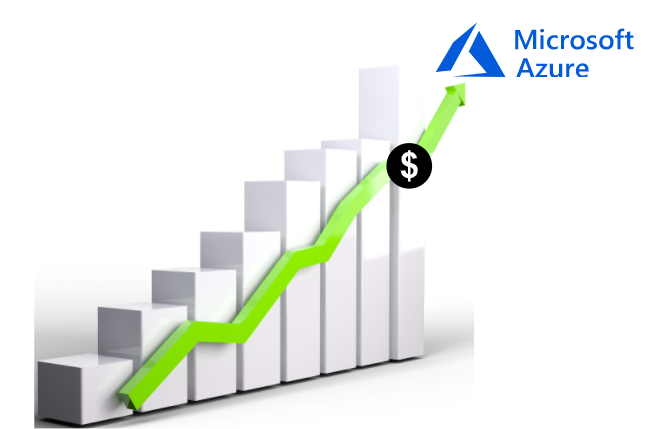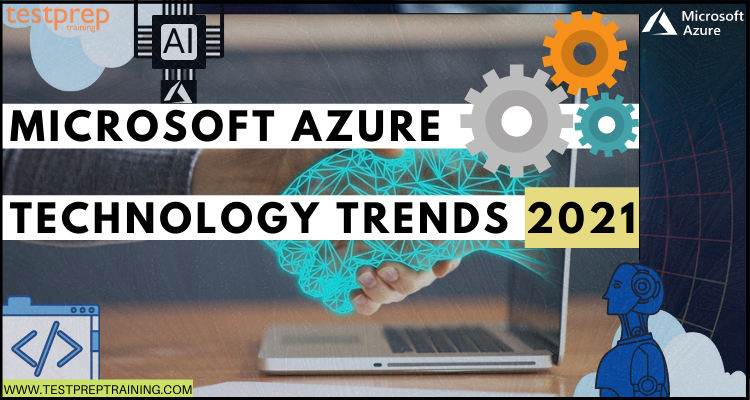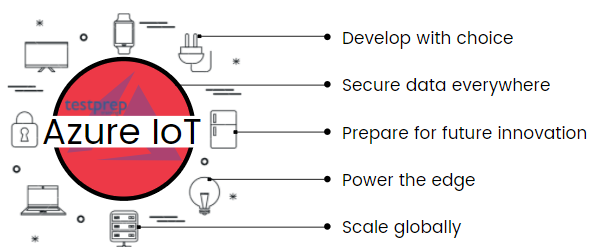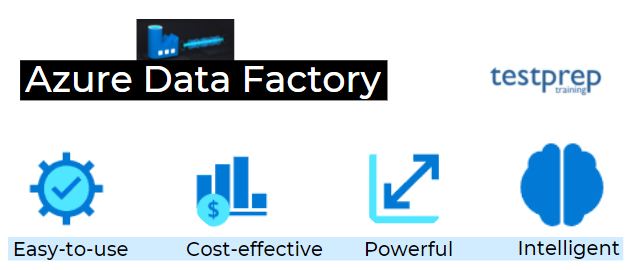Microsoft Azure is a constantly evolving platform, and there are several technology trends that are shaping its future. With getting rapid improvement in the top areas like cloud computing, IoT, cybersecurity, big data, artificial intelligence, and analytics, Microsoft Azure is well-known for having the industry’s largest portfolio, with 95 percent of Fortune 500 organizations trusting it. According to a survey, Microsoft spends about $1 billion (US dollars) every year on Azure security to safeguard customers’ data from cyber attacks.
However, in order to keep Azure’s whole system up to date, Microsoft must continue to provide new solutions, trends, updates, and methodologies in order to provide consumers with a better experience and solution. In connection with this, certain new alterations and names were introduced in the year 2021. We shall explore and comprehend those developments, as well as Azure’s market value rise, in this blog.
What is Microsoft Azure?
Microsoft Azure is a cloud computing platform and service provided by Microsoft. It allows organizations to build, deploy, and manage a wide range of applications and services in the cloud. Azure provides a comprehensive set of tools, services, and resources that can be used to develop, deploy, and manage applications across a variety of platforms and devices.
With Azure, organizations can choose to use either the public cloud or a hybrid cloud approach, which combines public and private cloud resources. Azure provides a wide range of services, including virtual machines, web apps, databases, analytics, storage, and networking, among others.
Azure is designed to provide a scalable and flexible platform for building and deploying applications, with a pay-as-you-go pricing model that allows organizations to pay only for the resources they use. Additionally, Azure provides a range of tools and services to support DevOps and Continuous Delivery, enabling organizations to build and deploy applications quickly and reliably.
Further, Azure:
- Firstly, provides security by having a back of a team of experts and proactive compliance trusted by enterprises, governments, and startups.
- Secondly, operates hybrid smoothly with on-premises over multiple clouds and at the edge. It integrates and controls your environments using services designed for the hybrid cloud.
- Thirdly, provides a commitment to open source and supports all languages and frameworks for building and deploying the way you want.
- Lastly, provides a continuous transformation from Microsoft thus supporting your development and products.
Moving, now we will talk about the top trending technologies that Microsoft Azure offers including the updates that are happening in these areas.
Microsoft Azure Top Technology Trends
With modifications in the cloud computing sector, it is important for Microsoft to stay up to date with it. That is to say, Microsoft has to regularly check for updates related to its services in order to provide a better experience to its Azure customers. So, let’s check the top trend areas of Microsoft Azure.
1. Intelligent cloud and edge
This is one of the biggest trends for providing intelligence, consistency, and a comprehensive platform from cloud to edge with Azure. However, the intelligent cloud can be considered as global computing, authorized by the public cloud and artificial intelligence (AI) technology for all types of intelligent applications and systems you can visualize. And, the intelligent edge refers to a continually expanding collection of connected systems and devices that collects and analyze data. This offers users real-time insights and experiences provided by highly responsive and contextually aware apps.
Further, this joins the virtually limitless computing power of the cloud with intelligent and perceptive devices at the edge of your network for creating a framework for building immersive and impactful business solutions.
This offers services like:
• Azure SQL Edge
This expands Microsoft SQL Server to the intelligent edge network with data streaming, time-series, and database machine learning.
• HoloLens 2
This creates a smarter experience with a heads-up, hands-free mixed reality solution.
• IoT Plug and Play
This connects IoT edge technologies to the cloud without any need for writing a single line of embedded code.
You must know that from May 2021, Azure Machine learning supports managing the end-to-end machine learning cycle using open MLFlow standards for allowing existing workloads to move from local execution to execution in the intelligent cloud & edge. This is done:
- Firstly, using MLflow tracking and logging API’s
- Secondly, tracking experiments and metrics with both services
- Then, tracking models in the MLflow and Azure Machine Learning model registry
- Lastly, deploying MLflow tracked models using the azureml-mlflow package to ACI and AKS
2. Azure Artificial Intelligence (AI)
With making artificial intelligence (AI) real for your business today, the Azure AI service is designed for developers and data scientists for getting the best research, responsible AI practices, and flexibility for building and deploying your own AI solutions. This provides access to high-quality vision, speech, language, and decision-making AI models via simple API calls. And, you can build machine learning models with tools like Jupyter Notebook, Visual Studio Code, and open-source frameworks like TensorFlow and PyTorch.
However, Azure AI is introducing new add-ons for allowing developers to significantly lower the time to value in modernizing common business processes.
There have been updates in Azure AI services for accelerating implementations of business scenarios.
• Azure Bot Service
Azure Bot Service now provides a visual canvas with extensible open-source tools. This provides developers access for adding speech and telephony abilities. And, they can perform testing, debugging, and publishing of the bots to multiple channels with minimal code changes.
• Azure Metrics Advisor
This service is now generally available. However, this service ingests time-series data, using machine learning for automatically finding irregularity from sensors, products, and business metrics. This helps customers to monitor the performance of their organizations’ growth engines, from sales to manufacturing operations.
• Azure Video Analyzer
This service is in preview which is used for bringing Live Video Analytics and Video Indexer into a single service. However, this combination of existing services helps developers build AI-powered video analytics from both stored and streaming videos.
Further, the Azure Cognitive Search, Azure Form Recognizer, and Azure Immersive Reader are now part of a new category in Azure AI called Azure Applied AI Services. These services create the cognitive APIs from Azure Cognitive Services and Azure Machine Learning thus, accelerating the development of AI solutions by providing additional task-specific AI and built-in business logic.
3. Azure Cognitive Services
Cognitive Services brings AI within reach of every developer without any need for machine-learning skills. This only requires an API call to place the ability for viewing, hearing, speaking, searching, understanding, and accelerating decision-making into applications. However, with upgrading the trends in Azure, Microsoft added new capabilities for documents translations and text analytics in Azure Cognitive Services.
• Document Translation
This is a feature of Translator in Azure Cognitive Services that was announced in preview in February, is now available. This allows developers for translating documents while preserving the structure and format of the original document.
• Text Analytics for health
Text Analytics in Azure Cognitive Services is now available. However, it allows developers for processing and extract insights from unstructured medical data. And, it now has Question Answering in preview for helping users find answers from a passage of text without saving or managing any data in Azure.
4. Azure Machine Learning
Machine learning allows data scientists and developers with having a productive experience of building, training, and deploying machine learning models. Use machine learning for accelerating time to market or DevOps for machine learning. Moreover, the robust MLOps capabilities allow the creation and deployment of models at scale using automated and reproducible machine learning workflows.
Further, talking about the updates,
- Machine learning now can accelerate the deployment of AI models using two new machine learning capabilities:
• Azure Machine Learning managed endpoints
This is now in preview, which refers to a new capability inside Azure Machine Learning for helping developers and data scientists to create and deploy machine learning models fastly. This also helps customers deploy and begin their machine learning models easily by automating the creation and management of the basic compute infrastructure, updates, and security. However, using this capability, customers also get infrastructure monitoring and log analytics capabilities.
• PyTorch Enterprise on Microsoft Azure
This provides Microsoft Premier and Unified Support for Enterprise customers additional benefits like prioritized requests, hands-on support, and solutions for hotfixes, bugs, and security patches. However, PyTorch refers to an open-source, deep-learning framework used for providing a smooth path from research to production. Microsoft is getting together with PyTorch for creating a new initiative, the PyTorch Enterprise Support Program. This will provide PyTorch users a more reliable production experience.
5. Azure Cloud-native and Applications Platform
Cloud-native applications are optimized for cloud-scale and performance. They are based on microservices architectures, use managed services, and take advantage of continuous delivery for achieving reliability and faster time to market. You can build your cloud-native apps with Azure fully managed services, seamlessly integrated development tools, and built-in, enterprise-grade security. Moreover, it provides an environment for creating highly secure, resilient apps. Further, in upgrading the services, Microsoft has also done some modifications in the cloud-native applications. Let’s check it!
• Azure App Services
Now, Azure App Service can run on Kubernetes clusters anywhere using Azure Arc. Using this, customers will not have to choose between the productivity of the platform as a service (PaaS) and the control of Kubernetes. Moreover, the app services are now Azure Arc-enabled which allows customers for deploying Web Apps, Functions, API gateways, Logic Apps, and Event Grid services on pre-provisioned Kubernetes clusters.
• Azure API
Azure API Management has now native support for WebSocket APIs. However, this is under preview. Where Azure API Management refers to a hybrid, multi-cloud management platform for APIs overall environments. On the other hand, the WebSocket APIs are used by customers for building real-time web apps like stock market reports and live sports scores. However, the native support for WebSocket APIs enables customers for managing, protecting, observing and expose their WebSocket APIs in Azure API Management by providing a more combined view and consistent governance of all APIs over environments.
• Azure Logic Apps
Azure Logic Apps are now upgraded with workable hosting options for providing stability and integration with developers. However, the Logic Apps are extended to become the cornerstone of Azure Integration Services, an integration platform as a service (iPaaS) providing mission-critical enterprise integration. This feature for Logic Apps allows better consistency and integration with developer tools. Tools can be Visual Studio Code and enhance developer productivity. Further, there will be a new standard pricing tier and added 4,000 additional actions to the consumption tier for allowing users to pay by the use.
• Azure Market Place
Azure marketplaces now provide customers to move their Java apps to the Azure infrastructure with greater reliability and automation.
- Firstly, there is Red Hat JBoss Enterprise Application Platform (EAP) on Azure Red Hat Enterprise Linux (RHEL) virtual machines (VMs) and Virtual Machine Scale Sets are now available. These provide an easy path for customers to move their enterprise Java apps running on JBoss EAP to the cloud.
- Secondly, there is WebSphere Application Server (Traditional) on Azure Virtual Machines that are now available. This helps customers to move enterprise Java apps running on WebSphere to the cloud, with automated solution templates and joint support from Microsoft and IBM.
• Azure IoT
Azure IoT refers to a collection of services and capabilities for meeting customers where they are, from the edge to the cloud. This includes security and operating systems for devices and equipment including data and analytics for helping businesses in building, deploying, and managing Internet of Things (IoT) apps.
However, Microsoft has trending updates in Azure IoT:
Azure IoT Edge
Azure IoT Edge now comes with accommodating abilities. This service offers a solution that enables industrial customers for securing their most critical assets for network isolation. Further, the Azure IoT Edge for Linux on Windows that is EFLOW is now officially available. This allows customers to use both Windows and Linux instead of choosing just one. Moreover, customers retain their existing Windows IoT assets. And, they get to benefit from the power of Windows IoT for apps that need an interactive UX and high-performance hardware interaction.
Azure Sphere
Azure Sphere provides comprehensive IoT security solutions including hardware, OS, and cloud components for IoT device security for protecting devices, businesses, and customers. It comes with certified chips from hardware partners that include built-in Microsoft security technology for providing connectivity and a dependable hardware root of trust. Further, Azure Sphere OS adds layers of protection and ongoing security updates for creating a trustworthy platform for new IoT experiences. Talking about the update, a new version Azure Sphere OS version 21.07 is now available for evaluation in the Retail Eval feed.
7. Azure Data
For controlling serverless data integration solutions for consuming, preparing, and transforming all data at scale, the Azure Data factory is necessary.
However, with continuing the Microsoft Azure trends, let’s check the updates in this.
• Azure Analytics
There are multiple updates to the Azure analytics which bring together data integration, enterprise data warehousing, and big data analytics for providing real-time data insights. These analytics and governance capabilities support faster, more reliable insights in an enhancing complex market.
- Firstly, the Azure Synapse Link for Dataverse is now in preview. This capability is for removings barriers between business apps data and analytical systems.
- Secondly, Azure Synapse support for Spark 3.0.1 is now in preview. Customers can now use the Spark 3.0.1 runtime with additional performance upgrading optimizations from their Synapse workspace.
- Lastly, Synapse Apache Spark Hardware Acceleration is now in preview. However, Azure Synapse Analytics now supports using field-programmable gate array (FPGA) hardware and graphics processing unit (GPU) processors for handling AI better and accelerating Apache Spark for data processing and machine learning.
• Azure Cosmos DB
There have been updates for Azure Cosmos DB to help developers in building and modernizing high-performance apps at any scale. These features give customers enhanced security, cost-effectiveness, control, and flexibility.
- Firstly, now, developers can modify specific fields or properties inside a document without any need for a full document read and replace using partial document update for Azure Cosmos DB.
- Secondly, using the Azure Cosmos DB serverless, developers can now optimize costs and easily run apps with spiky traffic patterns on Azure Cosmos DB.
- Thirdly, Azure Cosmos DB Always Encrypted is now under preview. However, using this, customers can encrypt sensitive data within their client app before it gets stored in their database with Always Encrypted for Azure Cosmos DB.
- Lastly, customers can have enhanced control over data security in Azure Cosmos DB RBAC with Azure Active Directory (Azure AD) integration. This service is now available for the Core (SQL) API.
8. Azure Developer tools
For helping developers get a better experience, Microsoft always provides the best-updated services. Related to this, it came with .NET 6 Preview 4. This comes with new ways for building native, cross-platform apps, high performance, and minimum web APIs. In this:
- Firstly, there is .NET Multi-platform App UI (.NET MAUI). This is for developers building native apps for Windows, macOS, iOS, and Android with a single codebase and development experience.
- Secondly, it has ASP.NET Blazor hybrid apps for developers creating cross-platform desktop and web UIs that take advantage of native device capabilities.
- Thirdly, it now contains cloud-native investments like smaller container images. This uses less memory and minimal web APIs for creating smaller, faster microservices.
- Lastly, there are more device targets and flexible deployment including:
- Apple Silicon (“M1”) support
- Windows Forms
- Windows Presentation Foundation (WPF) on ARM64.
9. Azure Security
We know that providing security is one of the major tasks in the cloud. And, with keeping this in priority, Azure security provides confidentiality, integrity, and availability of customer data including enabling transparent accountability. Further, for keeping this more secure, now, the Azure Security Center offers container scanning results powered by Github actions.
That is to say, the Azure Security Center (ASC) can now display container scan results found by a GitHub Action. This is so that ASC customers can easily incorporate security and compliance into the early stages of the software development lifecycle. This feature provides end-to-end traceability, improving remediation time and strengthening an organization’s cloud security.
For More Information about Microsoft Azure Services Modifications, check the Azure News Page.
Above, we have covered the Microsoft Azure technology trends. In which, we understood about the services updates and modifications. In the next section, we will understand the future growth of Microsoft Azure.
Microsoft Azure: Future Growth
By providing benefits using its services and certifications, Microsoft Azure’s revenue has grown 50% year-over-year. And, in 2021, it is intended to show more progress. According to a survey, now more than a thousand Microsoft customers have started using Azure Arc. Using this, they can simplify hybrid management and control Azure services over on-premises, multi-cloud, and at the edge.

Microsoft Azure will continue its strong growth trajectory in the future. Here are a few factors that are likely to contribute to this growth:
- Increased demand for cloud computing services: With the growing need for digital transformation and the increasing amount of data being generated, the demand for cloud computing services is expected to continue to grow. Azure is well-positioned to benefit from this trend, given its broad range of services and offerings.
- Expansion into new markets and industries: Azure is expanding its reach into new markets and industries, such as healthcare and financial services, which are expected to drive growth in the future.
- Investment in research and development: Microsoft continues to invest heavily in research and development for Azure, which is likely to result in the introduction of new services and capabilities that will drive future growth.
- Strong competition: Microsoft is facing strong competition from other major players in the cloud computing space, such as Amazon Web Services and Google Cloud. However, Azure’s strong partnerships, global network of data centers, and broad range of services give it a competitive advantage.
In conclusion, Microsoft Azure is expected to continue its growth trajectory in the future, driven by increasing demand for cloud computing services, expansion into new markets and industries, investment in research and development, and strong competition.






